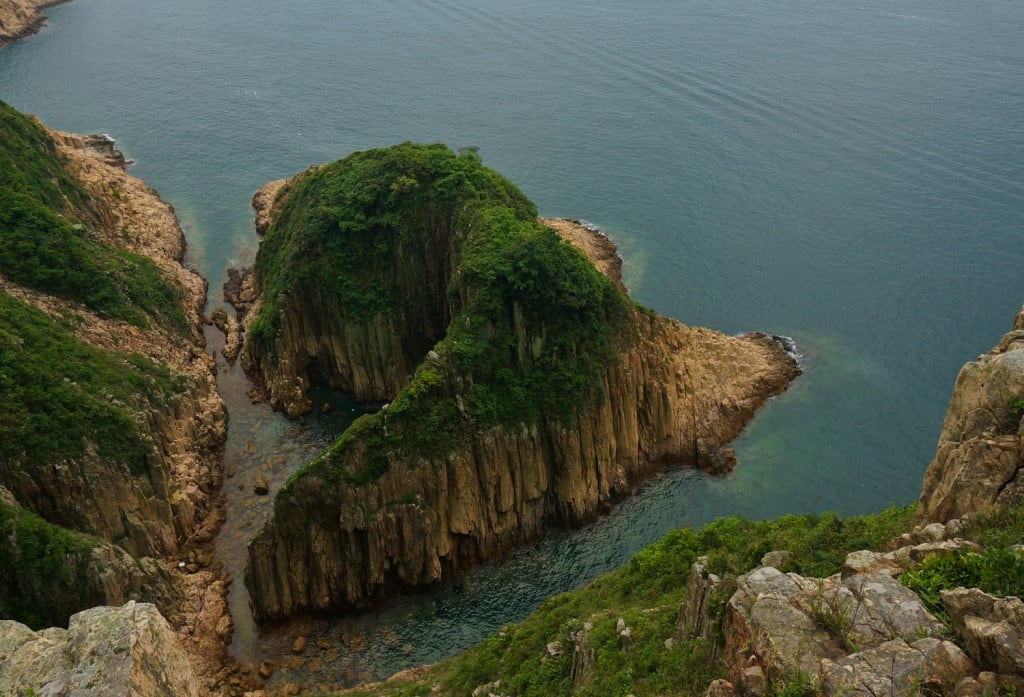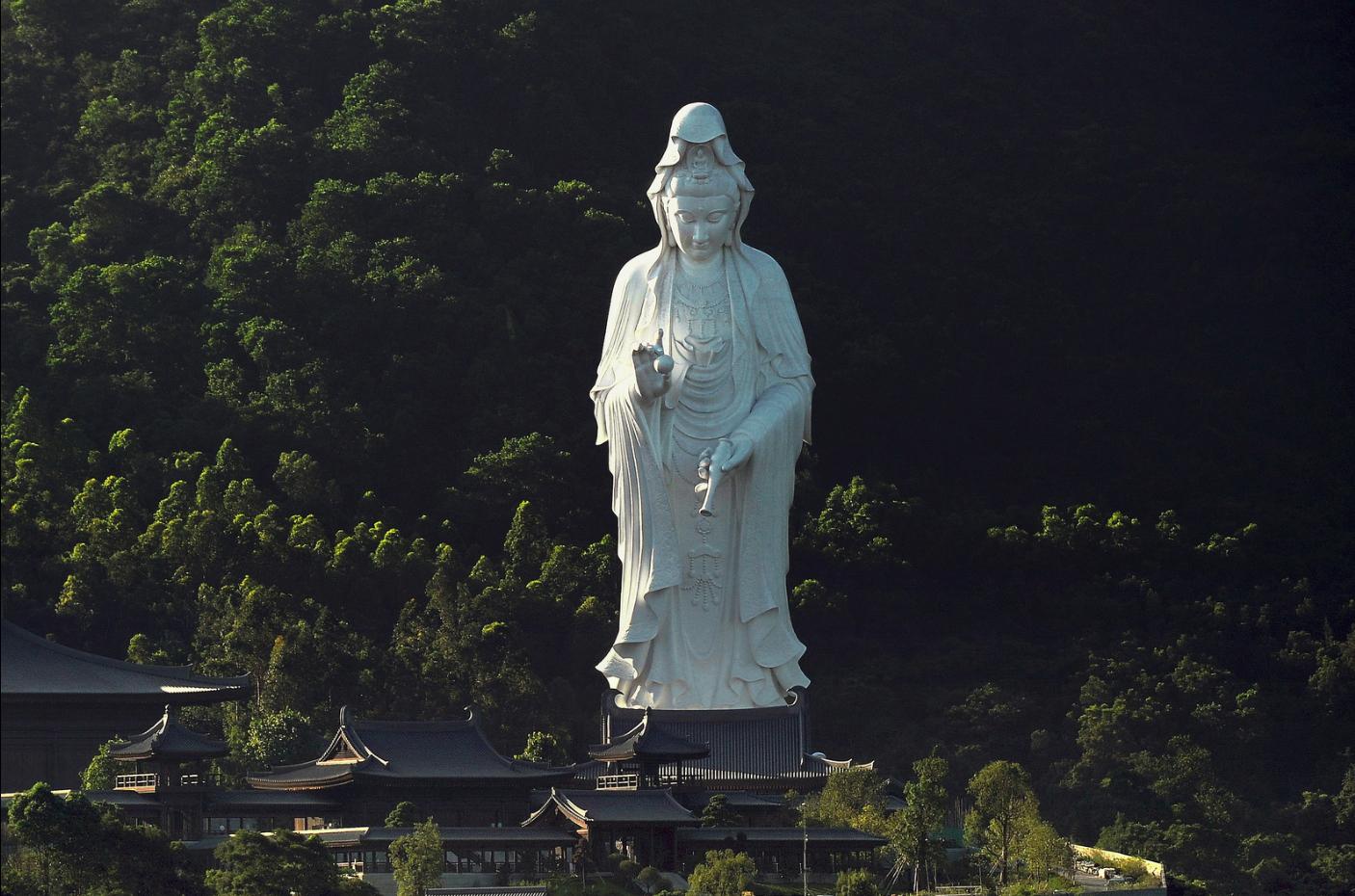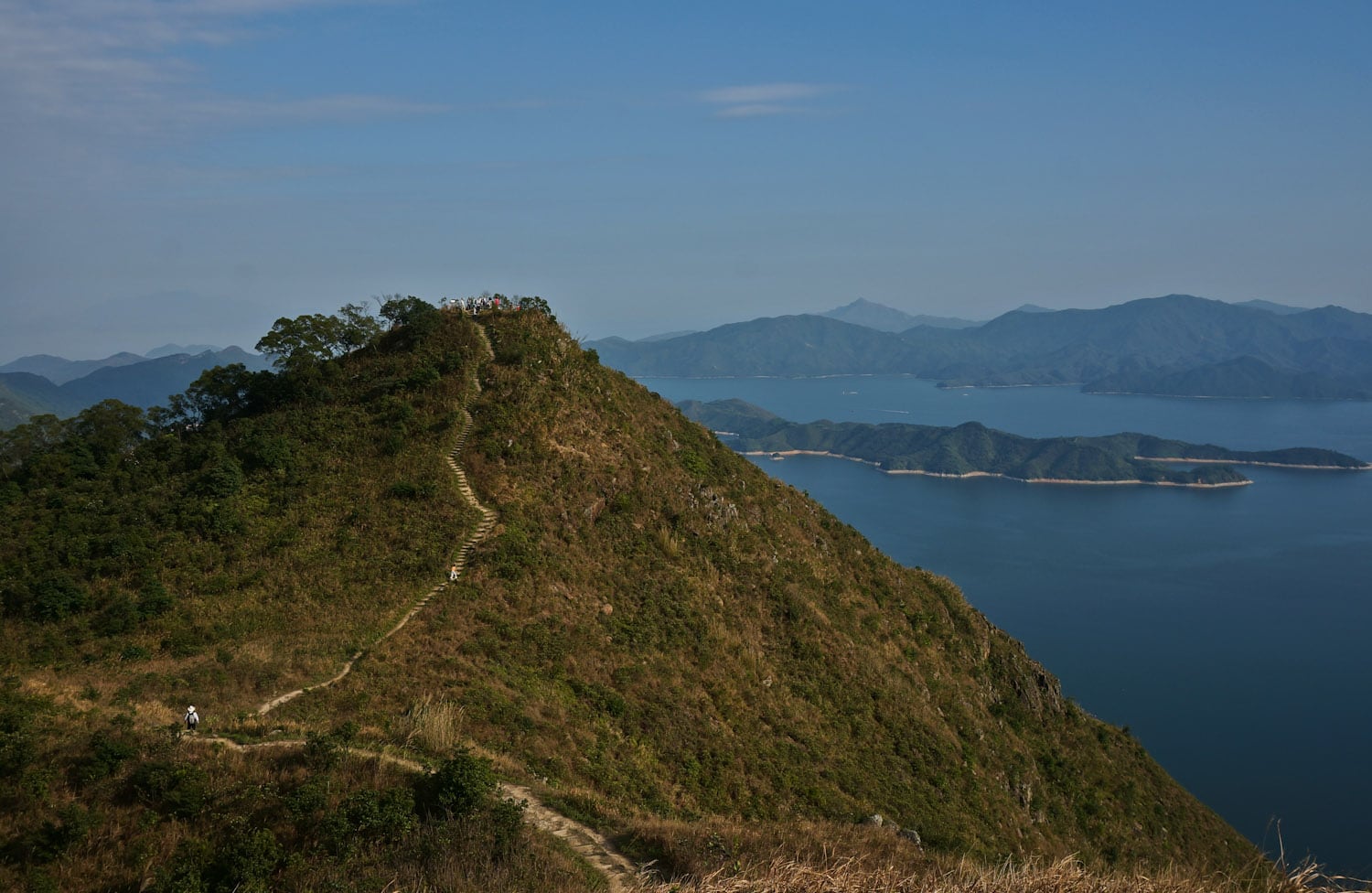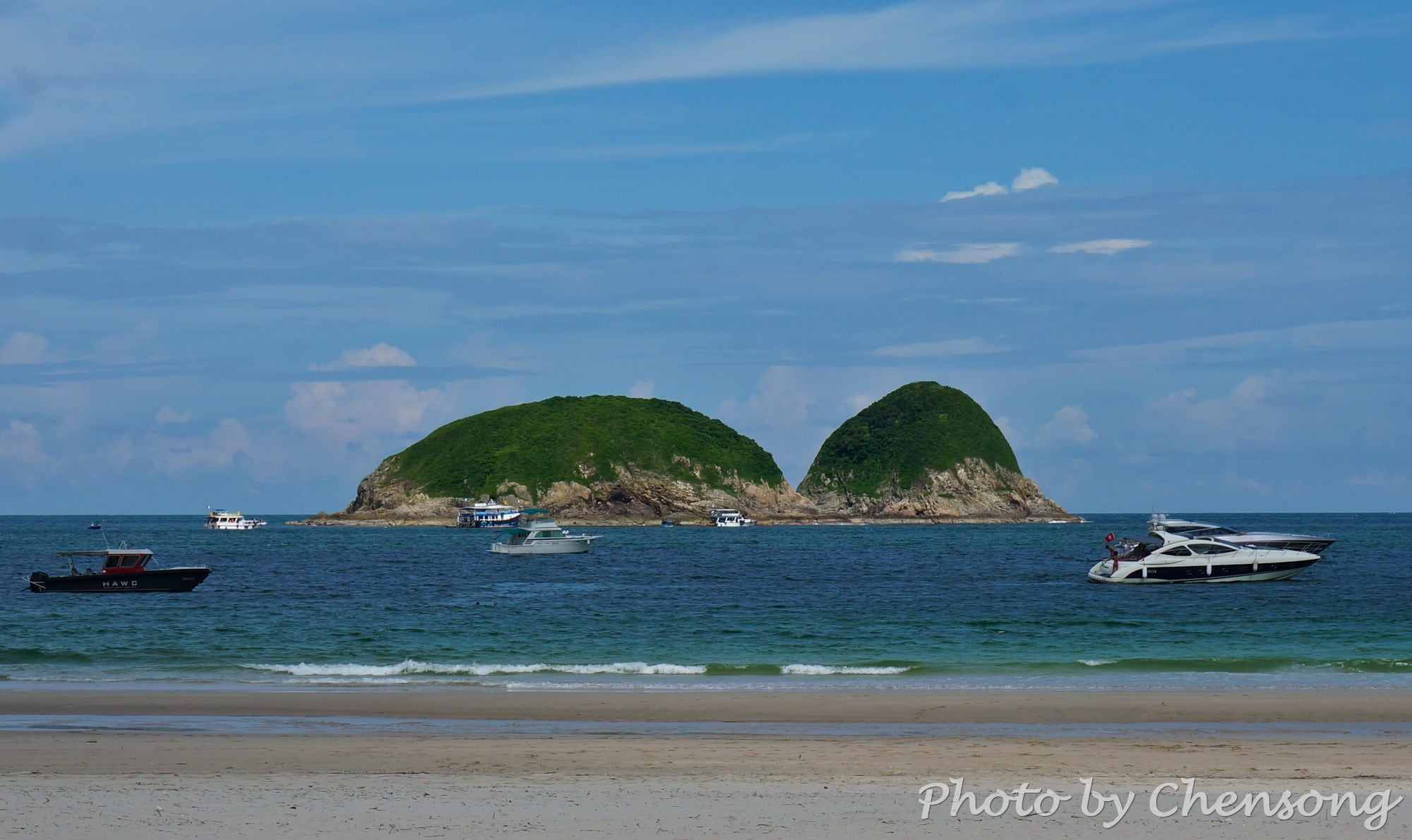
There are two giant “fish” in Hong Kong. One is located at Cape d’Aguilar Peninsula, the south end of Hong Kong Island. It is a real whale bone specimen owned by The HKU Swire Institute of Marine Science.
The “goldfish” in the picture above is hiding at Tiu Chung Chau (Jin Island), an outlying island in between Port Shelter and Rocky Harbour to the east of Hong Kong. To get a perfect shot of the goldfish shape, hikers need to get to the top of the hill and risk their lives falling down the cliff.
There is no regular public ferry service to the island. To get there, hikers need to rent a boat at Sai Kung Public Pier.





Great photo-thanks!
Yes, Hong Kong has so much undiscovered beauty and these photos are helping to show just that. Every couple of months I go to HK and love to explore Victoria Peak and the Harbor. I’m especially interested in endangered species like the white bellied sea eagle and the pink dolphin among others. To think that there is so much beauty amidst the urban city!
DAVE HALL, Teacher
Taiwan
American Expat
Hi Dave,
Thanks! I am really glad you like it.
Yes, actually 80% of HK is covered by mountains, nature parks, outlying islands, and coastlines. These are the real Hong Kong.
There are also some marine reserves that you should explore to find endangered species.
[…] activities left thousands of world-class hexagonal rock columns, sea caves and cut-away islands in east Sai […]
Hi Chengsong,
My name is Clement Huang and I am contacting you on behalf of Business Traveller Asia-Pacific in Hong Kong. I am currently in the midst of writing a short news article for our website platform regarding “5 amazing places you won’t find in a guidebook”, and would like to feature “Goldfish Wagging Tail” as one of the aforementioned locations.
I would like to get your permission to use the picture shown above on my article. Your website will of course be credited for the use of the picture.
Kind Regards,
Clement Huang
Hi Clement,
Sure. Feel free to use this picture.
It would be nice if you could send me the link of your article after you have completed it 🙂
I would be very happy to share it on my social networks.
Thanks!
– Chensong
[…] Over time, the cave became larger and deeper, and eventually cut right through Fa Shan, formed a sea arch. The eventual collapse of the sea arch cut Fa Shan into two parts, with one became the sea stack […]